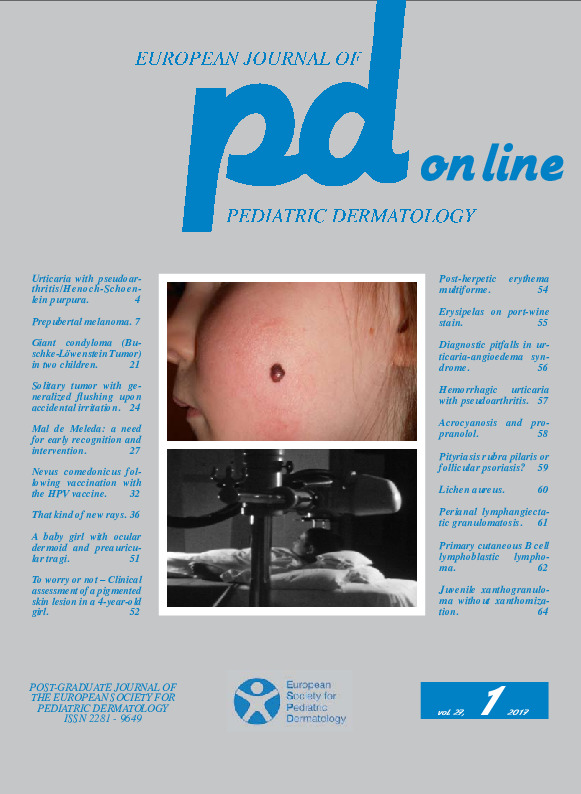Diagnostic pitfalls in urticaria-angioedema syndrome
Downloads
DOI:
https://doi.org/10.26326/2281-9649.27.1.1326How to Cite
Bonifazi E. 2017. Diagnostic pitfalls in urticaria-angioedema syndrome. Eur. J. Pediat. Dermatol. 27 (1): 56. 10.26326/2281-9649.27.1.1326.
pp. 56
Abstract
Urticaria is easily diagnosed when it lasts a few hours especially when its cause is referred by the same patient. When urticaria lasts longer physicians need to focus on lesions in visible locations, especially of the face, whose duration and regression without outcomes is more easy to remember for the patient. Even the distribution of lesions, the presence of very different in diameter lesions and their smoothness are helpful for the diagnosis. Diagnostic pitfalls also arise in hemorrhagic urticaria; however, it is not affected by orthostatic factor and therefore differs from vasculitis. Urticaria, when accompanied by important deep edema and localized in the joint, can cause functional impairment simulating arthritis: the complete healing within a few hours makes the diagnosis easier. In our case the bulbar urethra constriction caused by edema and the resulting difficulty with urination led to suspect a urinary tract infection.Keywords
Angioedema, Diagnostic pitfalls

